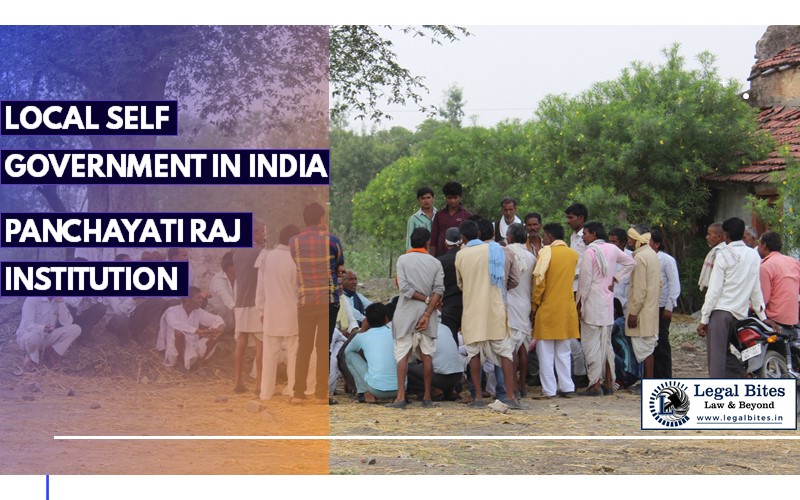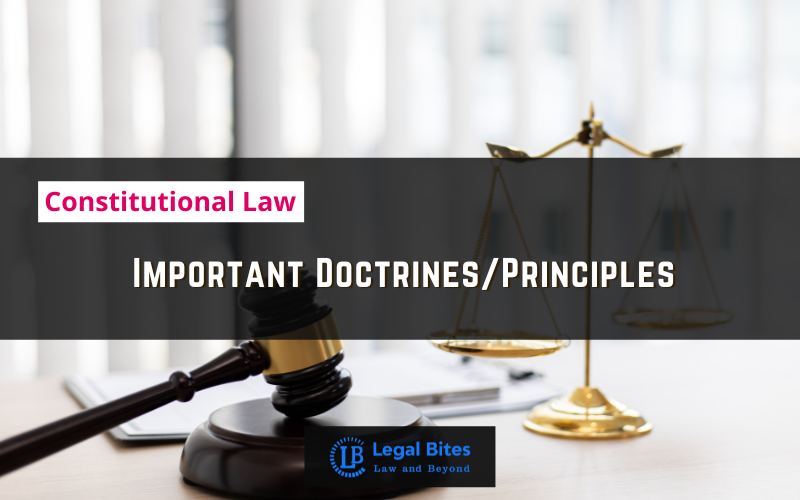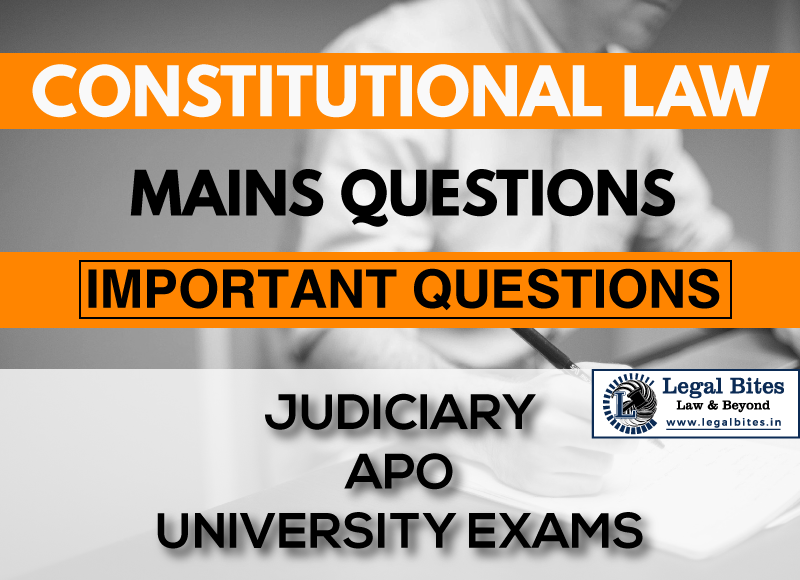Local Self Government In India | Panchayati Raj Institution & Urban Local self-governments
Local Self Government is a concept that refers to governance by local people of their area. Now, considering the number of villages in India that lack total connection from the urban parts and often get neglected by the government, it is essential to have a concept of local self-government to ensure that even rural areas are duly represented.… Read More »
;
Local Self Government is a concept that refers to governance by local people of their area. Now, considering the number of villages in India that lack total connection from the urban parts and often get neglected by the government, it is essential to have a concept of local self-government to ensure that even rural areas are duly represented. Pre-Independence situation During pre-historic times, local governments i.e. Panchayati raj was present and had a great role in solving the problems...
Local Self Government is a concept that refers to governance by local people of their area. Now, considering the number of villages in India that lack total connection from the urban parts and often get neglected by the government, it is essential to have a concept of local self-government to ensure that even rural areas are duly represented.
Pre-Independence situation
During pre-historic times, local governments i.e. Panchayati raj was present and had a great role in solving the problems of the common people. But as the present ruling system came in vogue, the role of such raj declined gradually. During the colonial period, in the beginning, years, its role kept declining. However, hardly did the Panchayati start recessing, when various commissions started recommending such institutions at the local level to manage the local matters.
East India Company in 1865 passed the resolution for the same and said that the local matters should be left on the local governing bodies as they can handle the same. After that, various commissions like the Royal Commission, the Government of India act,1935, Simon commission, etc. mentioned the dissemination of the powers. Nevertheless, it must be noted that under colonial rule local self-governments were never independent and were under the control of the state authorities.
Post-Independence Situation
After independence, India was declared as a democratic and federal nation. As she started developing, urbanization increased, and there became two areas, viz. ‘urban’ and ‘rural’. Increasing workload and communication gap between governments and citizens of the country gave rise to the third tier of the government, i.e. the Panchayati Raj or precisely, the local self-government system.
In India, it is usually of two types: (1) rural self-government and (2) urban self-government. In a rural area, it is recognized as Panchayati raj and in Urban areas, Municipality or Municipal Corporation. Local government is in direct contact with the public. It is the bottom-most level of government which maintains one on one contact with people within their area assist them in their representation. The local government got constitutional recognition through the 73rd and 74th amendment[1].
India made its Constitution and was implemented in 1950. After its independence. Under the Indian Constitution article 40 states that the state must encourage the introduction of independent bodies as Gramin panchayats. The first five-year plan mentioned about the dissemination of the powers reflecting the concept of development of rural and urban development. There were various committees set up regarding the local self-governments:
- Balwant Rai Mehta Committee: It was established in 1957, it showed the insistence of proper functioning elected organization at the ground level and recommended a three-tier system of governance.
- Ashok Mehta Committee: It was incorporated in 1977 and suggested the need for 2 tier system at the ground level of governance.
- Sarkaria Commission: It was incorporated in 1983, it observed that dissemination of the powers to the ground level will not be effective until the management of villages i.e rural areas is improved.
- GVK Rao Committee: It submitted its report in 1985 and put forward the problem that election in local governments is required to be conducted regularly.
- M Singhvi Committee: It was the most significant committee in the upliftment of local self-governments, in 1987 it emphasized the need for constitutional recognition of the local self-government. In order to protect their autonomy and systematically providing monetary assistance.
73rd Amendment & Panchayati Raj
After the recommendation of this committee government of India passed the 73rd Constitutional Amendment Act, 1992 which was proved to be a turning point in the concept of local self-government. It provides the state government to develop local bodies in accordance with provisions mentioned in the constitution. Part IX was incorporated through this amendment in the constitution which is from Article 243-243 O. The schedule was also introduced on the list (11th).
Rajasthan became the first state to implement Panchayati Raj on 2nd Oct 1959.
Supreme Court was of the view that attributes of the Panchayat will remain unchanged the main object of this amendment is to recognize village Panchayats Constitutionally.[2]
Amendment stated that there should be 3 tier system of Panchayati Raj Institutions:
- Gram Panchayat
- Panchayat Samiti
- Zila Panchayat
This three-level system is established at the local level at the village, block, and district levels respectively.
After such development now there was the need for the authority that will regulate and administer the elections of such bodies. Therefore state election commissions were introduced which will conduct elections after 5 years and for assisting such organizations in terms of monetary and planning State Financial Commission was incorporated.
Keeping in view of the caste system and discriminatory practices especially at the village level government also inserted the provision for the reservation of the appointments for Schedule castes, Scheduled tribes, and women.
Key attributes of the Amendment are as follows[3]:
- Three Tier Structure at Article 243-B includes Gram Panchayat at the Village level, Panchayat Samiti at the Block Level, and Zila Parishad at the District level.
- Elections at every five Article 243E tells, Every Panchayat shall continue for five years.
- Reservation of seat Article 243-D includes the reservation of seats for Scheduled Castes and Scheduled Tribes in proportion to their population for membership of panchayat.
- Article 243-D (3) provides that not less than one third (including the number of seats reserved for women belonging to Scheduled Castes and Scheduled Tribe) of the total number of seats to be filled up by direct election in every panchayat shall be allotted by rotation to different constituencies in a Panchayat.
- Article 243I provides for the constitution of State Finance Commission to review the financial position of the PRIs and to make recommendations to the Governor and distribution between the state and the PRIs of the net proceeds of the taxes, duties, tolls, and fees leviable by the State.
- Article 243K provides for the establishment of the State Election Commission. The overall control and management of rolls, as well as all elections related to Panchayats, lies with the State election commission.
- Article 243 D provides for the constitution of DPCs to consolidate the development plans prepared by the gram panchayat.
- Article 243(G) made the addition of the Eleventh Schedule and assigning duties and responsibilities on 29 subjects.
- Article 243 provides for GramSabha to exercise such power and perform such function at the village level as the legislature of a State may by law provides.
- As per Article 243C(5), the chairperson at the intermediate or district level panchayat is to be elected by the elected members thereof. The chairperson of the village panchayat is to be elected in such manner as the State Legislature may provide by law.
- Article 243O prohibits any challenge to the elections of the panchayat except by way of an election petition.
Supreme Court in Javed v. State of Haryana[4], held that if any person bearing 2 children is not eligible for the post of Panch or Sarpanch is constitutionally valid as per article 243G with respect to socio-economic, welfare and healthcare of the society as a whole.
It must be noted that the 73rd Amendment was not the first bill introduced for the local governments. Rajiv Gandhi Government introduced it in the 64th Constitutional Amendment Bill which was to provide authorize Panchayati raj but it was opposed by the Rajya sabha and opposition that it concentrates rather than decentralizing the authorities to the local bodies. Then in the Narasimha Rao Government, the 73rd Amendment Bill was passed for the same.
Panchayati Raj Institution
-
Gram Panchayat
Gram sabha is the no. of people in the village who are qualified voters. It elects the Gram panchayat which is composed of one Sarpanch and Panches to range from 5-11 which is subjected to the population of the village for the term of 5 years. 300 people or more should be there in the village for the constitution of Gram panchayat or the group of villages can have a single Panchayat.
The main purpose of the panchayat is to prepare a yearly budget for the development of the village and its people. The source of the budget is tax and grants by the state government or Zila Parishad.
-
Panchayat Samiti
It is also called middle-level panchayat which works at the block level or it can be said as the tehsil level. Members of such institutions can be between 15 to 25. It is composed of Sarpanchs, MPs, and MLAs of the concerned block, SC/ST representative, and one member from Farmers, Cooperative societies, Marketing, and Selected members. Members are composed for a period of 5 years. The purpose of such an organization is to develop the various sectors in the area like poultry, marketing, welfare, etc.
-
Zila Parishad
It is the institution at the district level and all the panchayats and municipalities are under this institution. Members are heads of the Panchayat Samities, MP, MLAs of the district representatives of SC/ST, and women on reserved seats for the term of 5 years. Total members of the institution may vary from 50-75. The main purpose of such an institution is to make development in the district, formulation, and implementation of the development projects in the area.
74th Amendment and Urban Local Self Governments
XIIth Schedule was introduced to encapsulate the tasks which must be performed by the Urban local public authorities under their concerned areas. It mandates the ward committees in the area where the population exceeds 300000. It also gives powers and duties to the municipalities and ward committees.
Historical Background of Urban Local Self government
It was originated at the time of colonial rule as India is urbanizing, therefore, the local authorities became necessary for the proper functioning of the same. First Municipal Corporation was established in Madras in 1688.
Lord Ripon who is regarded as the Father of Local government in India also mandated such an institution in its resolution in 1882. By the government of India act 1919, it mandates the local bodies control in the hands of ministries at the national level but after the government of India act, 1935 such bodies are said to be under the control of there respective provinces.
Key Attributes of the Amendment Act,1992
- Municipalities serving period will be 5 years and there must be reelection by the state election commission within 6 months. The minimum age of the person to become a member of the municipality is 21 years.
- 3 level system like Panchayati Raj Nagar panchayats for the areas recently transformed from rural to urban. Municipal council for compact areas, municipal corporations for wide areas. It must be noted that it is in the hand of the governor to constitute area type and municipality is not formed in the industrial cities.
- Areas are divided into wards for the election of all the members of a municipality. It must be noted that the state election commission may appoint a chairperson of committees except the ward committee and any person who has experience in the management of municipality without the right to vote.
- SC/ST seats must be reserved as per the proportion of their population in the area and one third in the committee must be a woman.
- Members of Panchayati raj or municipalities may be terminated as per any law of the state or center.
- Municipality’s source of funds are also tax paid by the people as Municipal Tax similar to the Panchayats and grants from the state government.
- Constitution of various committees like ward committees, district planning committees for linking rural and urban areas at the district level. elections of the municipality are also conducted by the state election commission.
In Anugrah Narain Singh v. State of Uttar Pradesh[5], the Supreme Court has ruled that once a notification for municipal election has been issued, there arises a “complete and absolute bar” in terms of Art. 243ZG in considering “any matter relating to municipal elections on any ground whatever. No election to a municipality can be quashed except by an election petition”.
In Lal Chand v. State of Haryana[6], it was held by the Punjab & Haryana High court that any constitutional amendment cannot forfeit the right of judicial review, therefore, petition regarding the election of the panchayat and municipality have to be taken into consideration but it must be relevant with subject to fact and conditions of the case. Hence Article 243O should be read with Articles 226 and 227.
Conclusion
Local self-government is panchayats in rural and municipalities in urban areas. Both got its constitutional recognition after 73rd and 74th Amendments in the Indian constitution respectively. After recommendations of several committees authoritative status was given to these institutions in India but it can be seen that still, the working of such institutions in our country is not up to the mark.
Major reasons for the same are Poor infrastructure, inadequate funds, bureaucratic influence excessively, and despite the appointment of subordinate bodies for accountability political dominance still plays a very important role in the functioning of this institution.
References
- Constitution of India, 1950
- Mathur M.P (1999): The Constitution Amendment act and Urban Local Government(74th), a Journal of the National Institute of Urban Affairs, Vol XIX (No.1)
- Jain M.P, Indian Constitutional Law (Wadhwa and Company Nagpur, 2003 5th edn.)
- Laxmikant, Indian Polity (Mc Graw Hill education 6th)
[1] Indira Hirway. “Panchayati Raj at Crossroads.” Economic and Political Weekly, vol. 24, no. 29, 1989, pp. 1663–1667
[2] Gujarat Pradesh Panchayat Parishad & Ors. v. State of Gujarat, (2007) 7 SCC 718
[3] Anand Teltumbde, “India’s (Jati) Panchayati Raj.” Economic and Political Weekly, vol. 46, no. 36, 2011, pp. 10–11
[4] (2003) 8 SCC 369
[5] (1996) 6 SCC 303
[6] AIR 1999 P&H 1 (FB)




